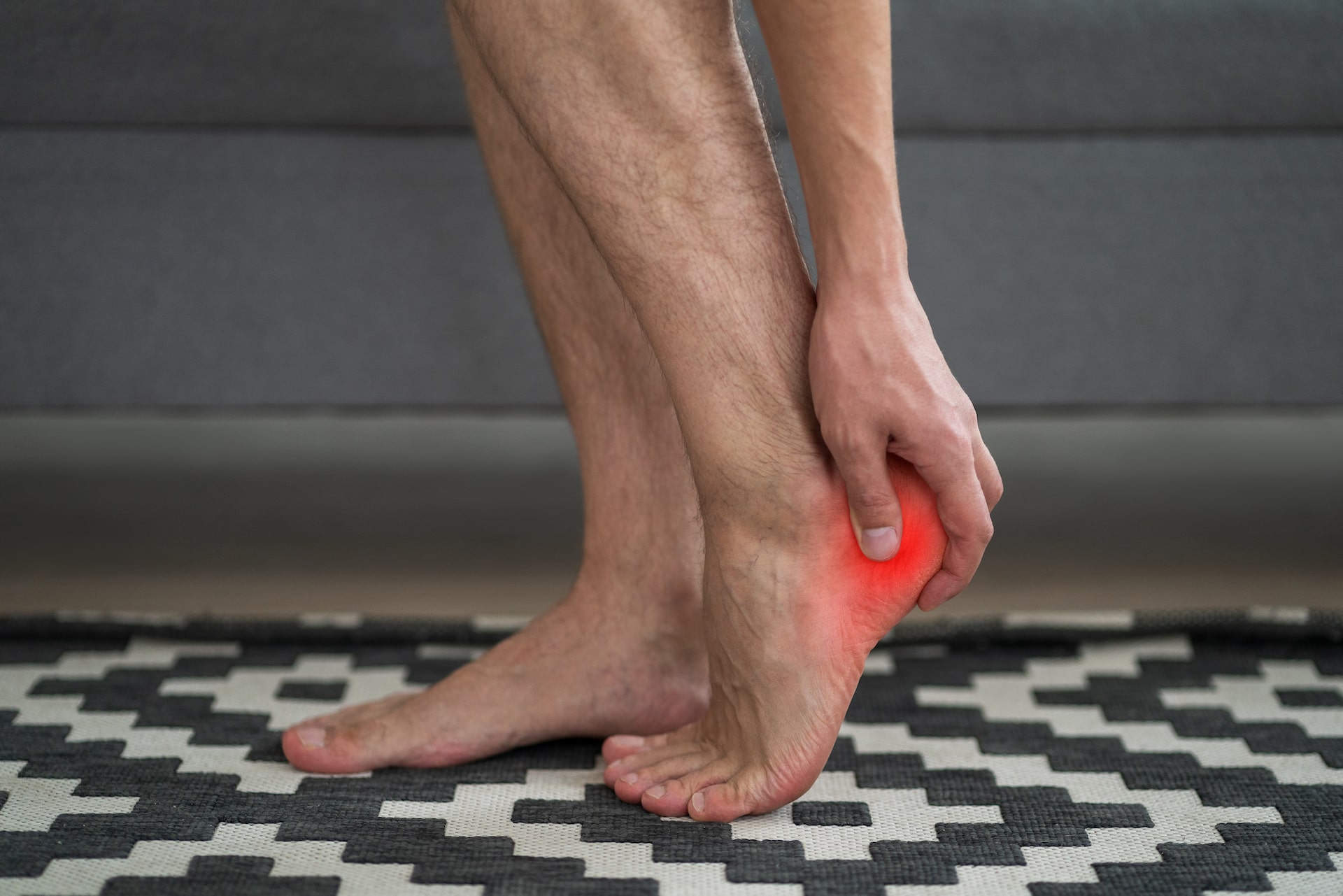Posterior tibial tendonitis
The posterior tibial tendon helps the arch of the foot maintain its shape and prevents excessive pronation (flattening) of the arch while walking, standing, or running. If not treated properly and early enough, posterior tibial tendonitis may develop into posterior tibial dysfunction, a progressive loss of strength and increase in flattening of the arch.
Pain from posterior tibial tendonitis is usually felt on the inner side of the ankle and along the arch, following the path of the tendon. Pain may also be present midway up the calf on the inner side. Swelling in the ankle and arch are also typical. Pain and swelling from posterior tibial tendonitis may progress slowly, and are usually initially only present during and immediately after physical activity. If left untreated, the pain will eventually be present even when at rest. Eventually, the injury may progress from tendonitis to a tear in the tendon.
Achilles tendonitis
The Achilles tendon, at the back of the ankle, is the largest tendon in the entire human body and attaches to the calf muscles and the back of the calcaneus (the heel bone). Because of its size and position, it is especially vulnerable to injury. The Achilles tendon endures all of the stress associated with running and jumping. Those most at risk for developing Achilles tendonitis are athletes engaged in basketball, tennis, football, soccer, volleyball, running, and track and field sports. Although Achilles tendonitis can occur in younger athletes, it is most common in those in their thirties or older as the ligaments and tendons begin to lose elasticity as the body ages.
Pain from Achilles tendonitis often progresses to the point that it interferes with the ability to run, jump, or do vigorous activities involving running or jumping. Even walking may be difficult.
Diagnosis
Both types of tendonitis are usually diagnosed by your podiatrist through a history and physical exam. Your podiatrist will examine your feet while asking you about your activities, symptoms and at home attempts at treatment, and possibly about your shoes. You may also be asked to perform some simple exercises such as trying to stand on the tips of your toes. In such exercises your affected foot will likely be obviously weaker and painful. An MRI or ultrasound may be used to determine the extent of your injury. In the worst case scenario, an MRI will show if you have suffered from a tendon rupture.
Treatment
Treatment for both posterior tibial tendonitis and Achilles tendonitis usually begins conservatively and may last from several weeks to many months. Conservative treatment begins with non-steroidal anti-inflammatory medications, physical therapy, rest, and orthotics. If these measures fail to provide relief, your podiatrist may recommend cortisone injections or immobilization as more aggressive means of reducing inflammation and stress on the tendons. If you still fail to find relief, you may require surgery. Surgery is typically a last resort for tendon injuries, and often only used when a significant rupture has occurred or the tendon weakness has progressed to the point of tendon dysfunction.
Returning to activities
Once your podiatrist has cleared you to begin physical activity again, you should expect to gradually return to your normal activities. Depending on the extent of your tendonitis and the course of your treatment, you may be given alternative exercises, such as swimming, that put significantly less stress on the feet and ankles. You will gradually be allowed to return to your normal activities under your podiatrist’s guidance, and possibly with the involvement of physical therapy. During your treatment and while gradually returning to your activities, your podiatrist will make recommendations about shoes and orthotics that may provide additional stability in an effort to avoid reinjury.
If you believe you have tendonitis or any other foot or ankle injury, call Kansas City Foot Specialists at 913-338-4440 today to schedule an appointment.



